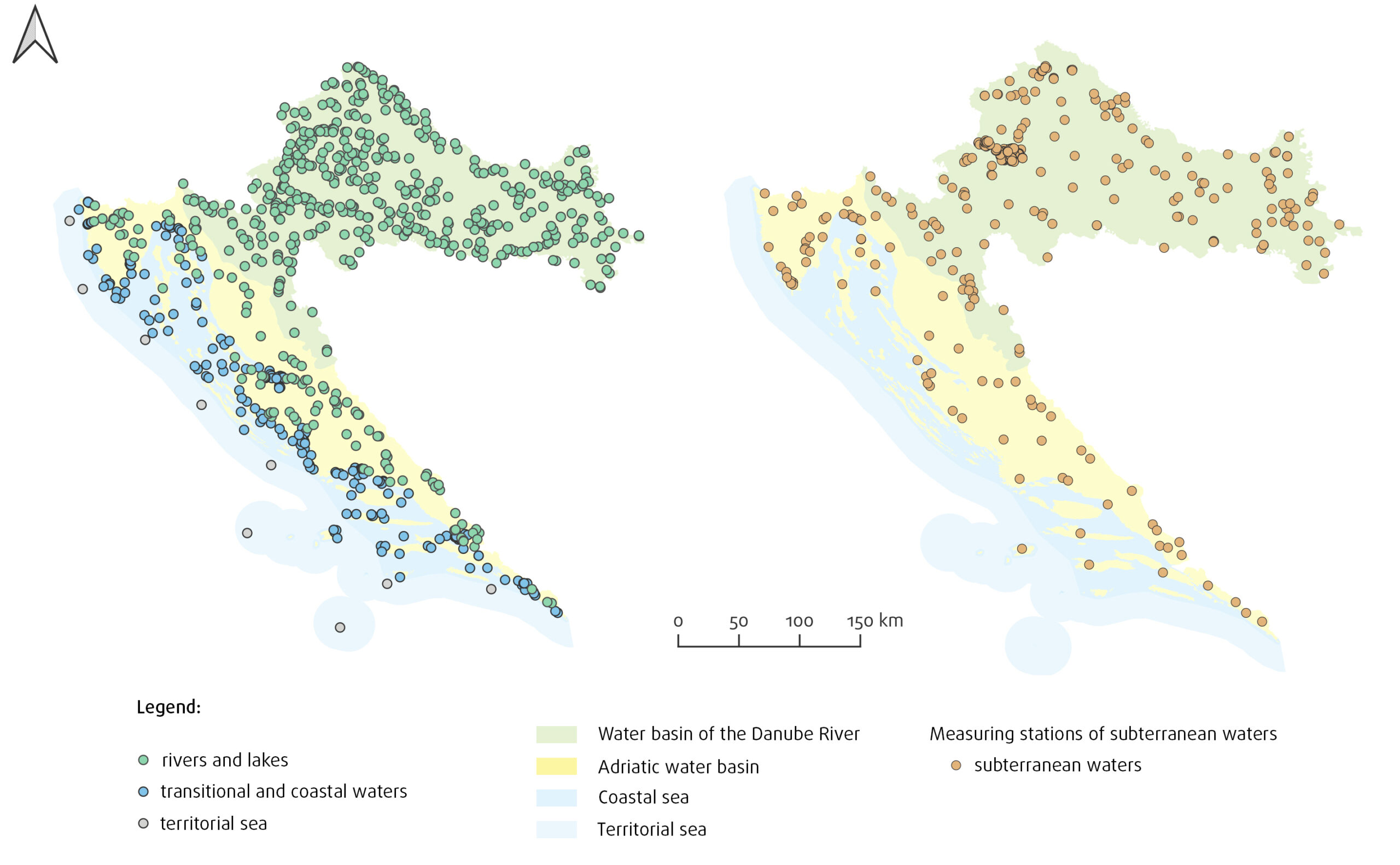Monitoring
Water status monitoring is divided into three main components in accordance with the objectives: surveillance monitoring, operational monitoring, and research monitoring.
1. Surveillance Monitoring, aimed at
2. Operational Monitoring, aimed at
3. Research Monitoring is carried out when
Monitoring of the Watch List Substances
Monitoring also includes the tracking of substances on the EU Watch List, which must be monitored across the European Union within the framework of water policy. It is conducted at selected stations during a minimum period of one year.
Monitoring Station Network
The network of monitoring stations for assessing the condition of surface waters is designed to:

The assessment of ecological status/potential is based on several key quality elements, grouped into four main categories: biological elements, basic physico-chemical elements, specific pollutants, and hydromorphological elements.
Based on the definitions outlined in the Water Framework Directive, five biological elements can be distinguished in rivers and lakes: phytoplankton, phytobenthos, macrophytes, macrozoobenthos and fish.
The biological quality elements for transitional waters include phytoplankton, macroalgae, seagrasses, macrozoobenthos, and fish. In coastal waters, the biological quality elements encompass pytoplankton, macroalgae, seagrasses, and macrozoobenthos.
The basic physico-chemical and chemical quality elements in surface freshwater bodies are temperature, salinity, pH, oxygen regime, nutrient concentrations, and specific pollutants (arsenic, copper, zinc, chromium and their compounds, fluorides, and organically bound halogens). In transitional and coastal waters, these elements include temperature, oxygen regime conditions, transparency, nutrient concentrations, and specific pollutants.
The hydromorphological quality elements for rivers include elements of the hydrological regime, river continuity, and morphological conditions, while for lakes, they include the hydrological regime and morphological conditions. For transitional and coastal waters, the hydromorphological elements encompass the tide regime and morphological conditions.
In addition to the indicators used for assessing ecological status within surveillance and operational monitoring, additional physico-chemical indicators, ions, and pollutantsbare also monitored, as they are particularly relevant for tracking the effects of air pollution on aquatic ecosystems.
Elements of Chemical Status
The elements of chemical status include priority and hazardous substances, which are assessed based on environmental quality standards defined for each category of substances. A good chemical status is achieved when the observed indicators do not exceed the threshold values, expressed as:
Chemical pollution of surface waters poses a threat to the aquatic environment due to effects such as acute and chronic toxicity to aquatic organisms, accumulation in ecosystems, and the loss of habitats and biodiversity. Moreover, it also represents a risk to human health. The Watch List includes substances or groups of substances that are not systematically monitored nor subject to discharge control under current regulations, meaning that there is limited data on their presence and potential adverse effects in the aquatic environment.
Water Status Assessment
For geothermal and mineral waters, the assessment of quantitative status includes groundwater levels or hydrostatic pressure and abundance, whereas the assessment of chemical status includes pollutants such as nitrates and pesticides, as well as the sum of trichloroethylene and tetrachloroethylene concentrations.
The condition of a groundwater body is determined based on groundwater monitoring results, in line with the methodologies set in the River Basin Management Plan. The final classification is based on the poorer of the two (chemical or quantitative status) and can be designated as either good or poor.
Monitoring is also carried out in water areas suitable for freshwater fish habitat, surface waters within catchment areas supplying water for human consumption, vulnerable and sensitive areas, and areas of the ecological network, through the testing of quality elements in protected areas.